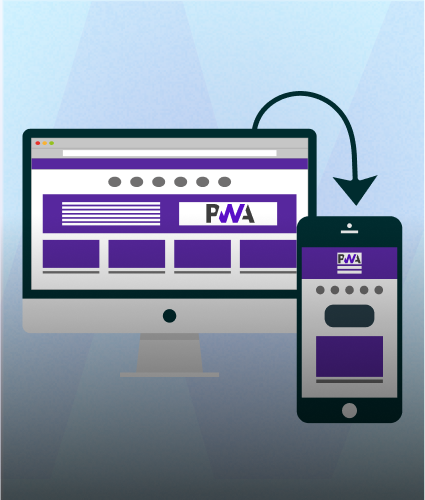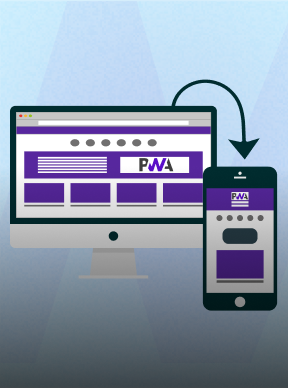Introduction
The SaaS market is growing at an incredible pace, with businesses of all sizes and industries realizing the benefits of this type of software. Building a Software as a Service (SaaS) app is a great way for entrepreneurs and business owners to increase revenue, attract new customers, and automate their operations. The SaaS market is growing rapidly, and businesses of all sizes and industries are realizing the benefits of this type of software. However, creating a successful SaaS app can be a complex and challenging process. From idea generation and market research to development and launch, there are many steps to consider. In this blog post, we'll walk you through the process of building your own SaaS app, and what are the challenges that you might face. We'll cover everything from identifying a need in the market to validating your idea, designing and developing your app, testing and launching, and growing and scaling your business. We'll also share tips and best practices to help you avoid common pitfalls and increase your chances of success. Are you an entrepreneur or business owner looking to expand your reach and revenue? Building your own Software as a Service (SaaS) app could be the solution you need. In this blog post, we'll take you through the process of creating your own SaaS app, from ideation to development and launch.
What is SaaS
SaaS stands for "Software as a Service." It refers to a software delivery model in which a provider hosts and maintains a software application and makes it available to customers over the internet. SaaS applications are typically accessed through a web browser, and customers typically pay for the software on a subscription basis. This differs from traditional software delivery models, such as on-premises software, in which the customer is responsible for hosting and maintaining the software on their own equipment.
SaaS (Software as a Service) is a software delivery model in which a provider hosts and maintains a software application and makes it available to customers over the internet, typically on a subscription basis. This model allows customers to access the software through a web browser, without the need to install or run the software on their own computers or servers. Because the provider is responsible for hosting and maintaining the software, SaaS can offer customers cost savings and convenience compared to traditional software delivery models. Examples of SaaS applications include email platforms, customer relationship management (CRM) systems, project management tools, and enterprise resource planning (ERP) systems.
Advantages of SaaS
Cost Efficiency
Since SaaS providers are responsible for hosting and maintaining the software and also since everything works through cloud and remote hosting, businesses do not need to invest in expensive hardware or IT personnel to run the software. This can result in significant cost savings for businesses. However, it is important to find a reliable partner for this.
Scalability
SaaS applications can be easily scaled up or down based on dynamic business requirements. This allows businesses to add or remove users as necessary, and also ensure that their application is always at its optimal performance.
Accessibility Ease
SaaS applications can be accessed from anyplace using an internet connected device. This makes it convenient for remote workers and employees on-the-go to stay connected and productive. Moreover, it also helps businesses collaborate with remote software partners for development & maintenance of the SaaS.
Security
SaaS providers often have dedicated teams, resources and a robust IT infrastructure which ensures the security of the software and data. This can greatly help companies who don't have the resources or expertise to maintain their own security.
Customization
SaaS apps are built for specific needs and targets. Many SaaS providers offer a high level of customization in the software that can help businesses fulfill their specific needs.
Focusing on the core business
By outsourcing the software solutions, companies can focus on the core business. This allows them to provide better services to customers rather than spending a lot of time, resources and efforts on IT solutions.
Integrations
SaaS applications can often integrate with other software and systems which can increase efficiency of the workflow and allow businesses to add certain features or functionalities which they may require.
Common types of SaaS Applications
Productivity and Collaboration Apps
This includes applications like email, calendar, and document management, as well as project management, team communication, and video conferencing tools which help manage and improve a teams productivity or collaboration between teams.
Customer Relationship Management (CRM)
CRMs help businesses manage and analyze customer interactions and data throughout the customer lifecycle. Moreover, CRMs allow businesses to manage business processes and operations seamlessly.
Human Resources (HR)
Tools like Applicant Tracking Systems (ATS), employee onboarding, timesheets and attendance solutions, payroll management and performance management systems are types of SaaS softwares which help automate redundant HR processes and improve efficiency.
Accounting and Finance
SaaS based accounting and finances tools are taking the sector by a revolution. Some of these solutions include applications for invoicing, accounting, loans, and financial planning and analysis among many more.
Enterprise Resource Planning (ERP)
ERP applications help organizations manage and automate many aspects of their business, including accounting, inventory management, manpower and supply chain management. This helps improve business performance through operations optimization.
Marketing Automation
Platforms that assist in automating repetitive tasks such as email campaigns, social media management, and lead management.
E-commerce
SaaS based ecommerce platform allow businesses to create and manage their own online store, handle payments, and fulfill orders. Users can customize their own store without having to go through the colossal task of developing a store from scratch.
Education and Learning
With a lot of learning happening online. Online educators and similar businesses can make the best of online learning management systems and other similar tools which can be used to create, deliver and manage e-learning programs and materials.
How to Develop your own SaaS Application
Developing a Software as a Service (SaaS) application typically involves several steps and considerations which are as follows:
Defining the Problem
Every solution is built to solve a problem. Identify the specific problem or need that your SaaS application and business will address for customers. Understand your target audience, their pain points, grievances, what are the current shortcomings and what kind of solution will work for them.
Conceptualizing the Solution
Design a solution that addresses the identified problem, need or shortcomings in your target. Keeping this in mind consider the features and functionalities that the application will need to have in order to be of value to your users and make it user-friendly.
Choosing the right technology stack
With the immense development in IT & Software, there have come up hundreds of technologies and frameworks to choose from. From these, it is imperative that you choose the one that fits your needs the best. Selecting the right technologies can efficiently cater to the scalability, security and performance of your SaaS application. Moreover, if you are just starting off it is also important to choose the right IT partner who can help you with the expertise and experience required to develop the platform you want.
Building the MVP
When starting off with an idea, it is recommended that you develop the application using a minimum viable product (MVP) approach. This will help you validate the product idea and receive feedback from users early on. Moreover, you will also get an idea on what features too add and what changes to make before you spend a lot of time and resources building a full-featured product. Read our blog on mistakes to avoid while developing an MVP.
Deployment and Hosting
Once you have a product ready, you will need an infrastructure where you can host it. For this you can either go in-house or choose a reliable hosting provider. Decide on a hosting solution for your SaaS application and develop the necessary infrastructure to deploy and run the application.
Testing and Deployment
Before you launch, it is important that your product is perfect and flawless. Perform thorough testing of the application to ensure it is functioning correctly and is free of bugs. Once testing is complete, deploy the application to a live environment to delight your customers.
Continuous Development and Maintenance
Keep the SaaS application up to date by regularly monitoring, testing, and updating it. It is also important to have a plan in place to handle any technical issues or customer support needs that arise.
Monetization Strategy
Ultimately every business and app needs to make profit to survive and grow. You need to decide how you will monetize the SaaS application. Based on the services and users, you can choose between a subscription model, pay-per-use, or some other method.
The process of developing a SaaS application can be complex and time-consuming, but following these steps and putting in the necessary work will help ensure that your application is well-designed, user-friendly, and successful.
How to monetize a SaaS application
There are several methods, strategies or payment models you can use to monetize your SaaS app. Here are some of them:
Subscription-based pricing
This is the most common monetization method for SaaS applications. Customers pay a recurring fee, usually on a monthly or annual basis, to access and use the application. This model allows for predictable revenue streams and can also be easily scaled up or down depending on the number of users.
Pay-per-use pricing
This model charges customers based on their usage of the application, such as the number of transactions or messages processed. This can be a good option for SaaS applications that have very high or low usage patterns.
Freemium
This method offers the basic version of the SaaS application for free , however, users have the option of purchasing additional features or functionalities on a subscription or pay-per-use basis. This can be a good way to attract customers to try the application before committing to a paid plan. Giving users limited free access rather than keeping a paid only access can also help get more paid users.
Advertising
Some SaaS applications can monetize by displaying ads or sponsored content within the application. This method of monetization works well for SaaS applications that have a large user base and high traffic.
White-label or reselling
This method allows other businesses to resell or brand the SaaS application as their own. This can be a good option for SaaS applications that have wide appeal across different industries or segments.
Ultimately, the most effective monetization strategy will depend on the specific application and its target market. In order to determine which monetization strategy is the best for you, It's important to research the competition and the SaaS industry standards for your target market.
Conclusion
In conclusion, SaaS (Software as a Service) is a software delivery model in which a provider hosts and maintains a software application and makes it available to customers over the internet. SaaS has several benefits including cost savings, scalability, accessibility, automatic updates and security, and can be used for a variety of business needs such as productivity, customer relationship management, human resources, accounting, enterprise resource planning, marketing automation, e-commerce, business intelligence and education. Developing a SaaS application involves several steps such as defining the problem, conceptualizing the solution, building the MVP, choosing the right technology stack, deployment and hosting, testing, and continuous development and maintenance. Moreover, monetizing a SaaS application can be done through subscription-based pricing, pay-per-use pricing, freemium, advertising, white-label or resell, consultancy, or partnerships and integrations. The most effective monetization strategy will depend on the specific application and its user base. Talk to our experts for free and clear any doubts you may have about building your own SaaS app.




.svg)

.svg)



.svg)

.svg)










.png)
.png)
.png)
.png)
.png)
.png)



